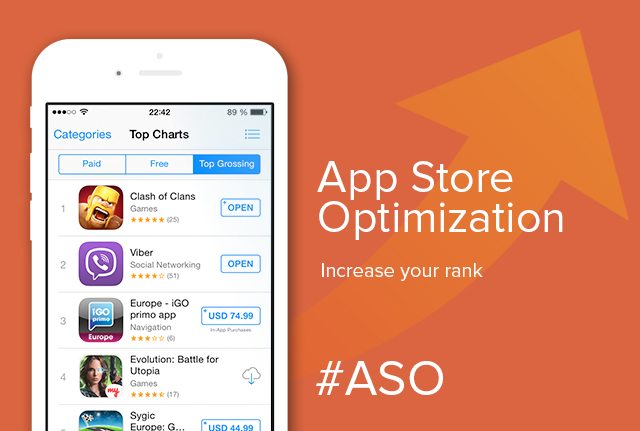
The ASO Trick No One Is Talking About
Admit it. ASO is boring! And every app marketer worth their salt knows the basics of optimization to get their app discovered in the app stores. You have your favorite ASO tool to monitor your app’s keywords and your competitors’ and rank them for competitiveness and search volume. You stuffed in a few keywords that you hope will take some traffic from your competitors. You even did some link-building campaigns to increase traffic to your app’s Google Play page.
Unfortunately… so did every other professional app marketer out there.
So how do you stand out? With so many apps competing for the same keywords, how does the app store determine which apps will show up first for any given search? According to experts, the two main variables that change an app’s visibility – all else being equal – are number of downloads and engaged users (as shown through app reviews).
These two things should, of course, go together. When high-quality users download your app, they’ll leave more reviews (positive reviews, hopefully – more on this in a second) – in the app store.
The key here is high quality users. Developers trying to cheat the app store by buying low quality downloads through incentivized campaigns may get a temporary boost in organic traffic (to varying effect, as we’ve discussed previously), but will not see a corresponding rise in reviews and thus the extra traffic will not have the same boost effect.
On the other hand, getting downloads through traditional mobile advertising (think non-incentivized campaigns through Facebook or Liftoff) is a great way to get good users, but we don’t want a good user… we want a great user – the kind of user that loves to leave feedback in the app store. That’s the trick.
App store search rank can be increased by optimizing a user acquisition campaign towards users that leave positive app reviews.
Here’s how to do it:
- Install a review generation tool (like AppTentive) in your app. Review generation tools are designed to get feedback from your most engaged users. After a user has spent a certain amount of time in the app (making it more likely they’re one of those quality users we’re aiming for), the tool prompts the user for their opinion of the app. If they don’t like the app or have negative feedback, that feedback is sent directly to you, rather than to the app store for the world to see. If they feel positively about your app, they are directed to the app store to leave a rating or review.
- Use a mobile attribution analytics tool like MobileAppTracking or AppsFlyer to create a tracked event that identifies users who tap the “Yes, I like this app” button. At the same time, install the Liftoff SDK to pull cross campaign data into the Liftoff campaign optimization system.
- Liftoff can now use data from your user acquisition campaigns to create a demographic profile of those users who like the app and are leaving positive reviews. With this in place, we can run a lookalike user acquisition campaign targeting people who look like the people who are leaving positive reviews of your app!
With this tactic you get the best of both worlds: not only do you increase your rate of downloads like you would with any user acquisition campaign, but you are bringing in users most likely to leave a positive review. Working in tandem, these two things will cause your app to increase its position in the app store search results, and ultimately drive more organic downloads.